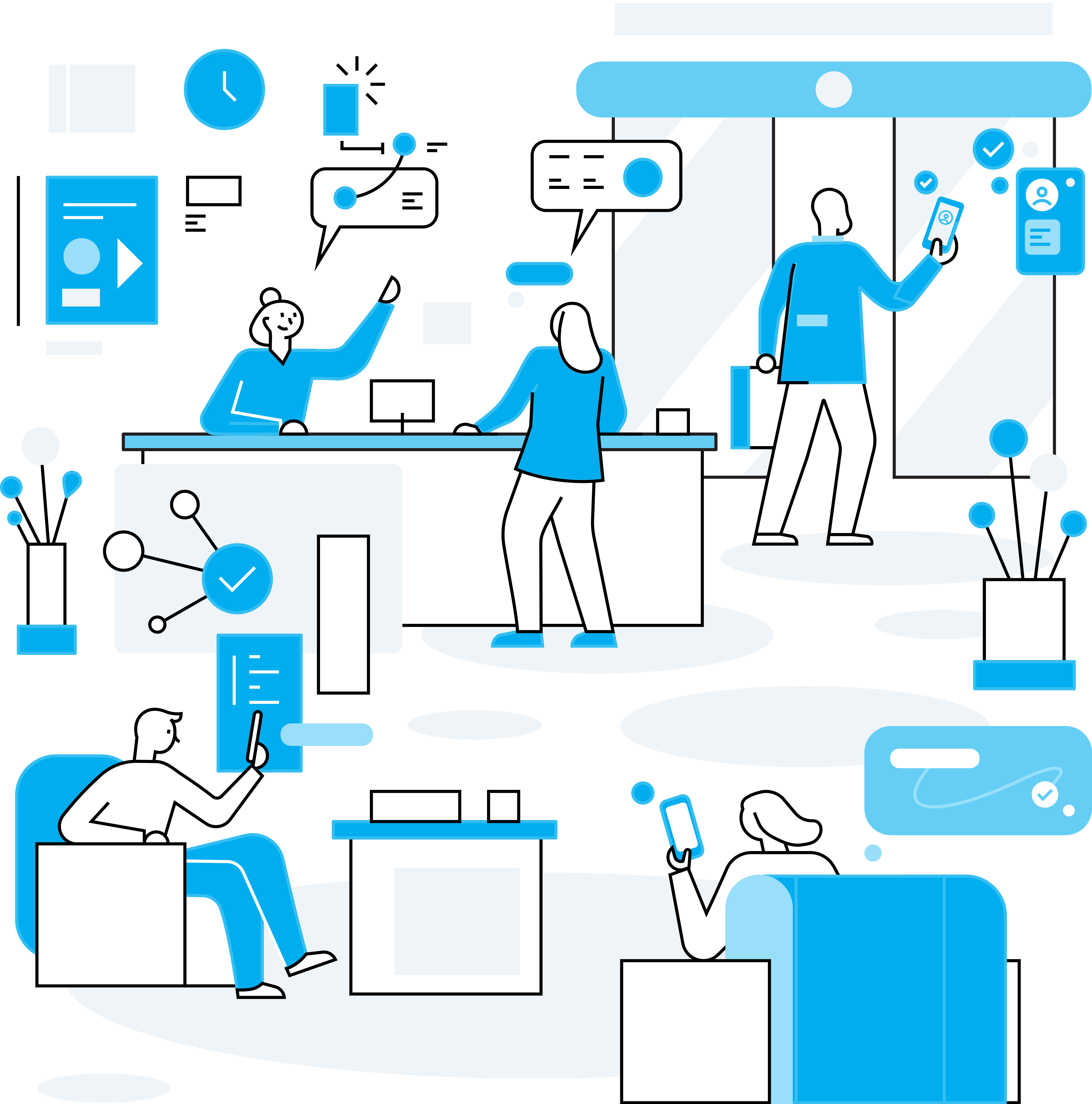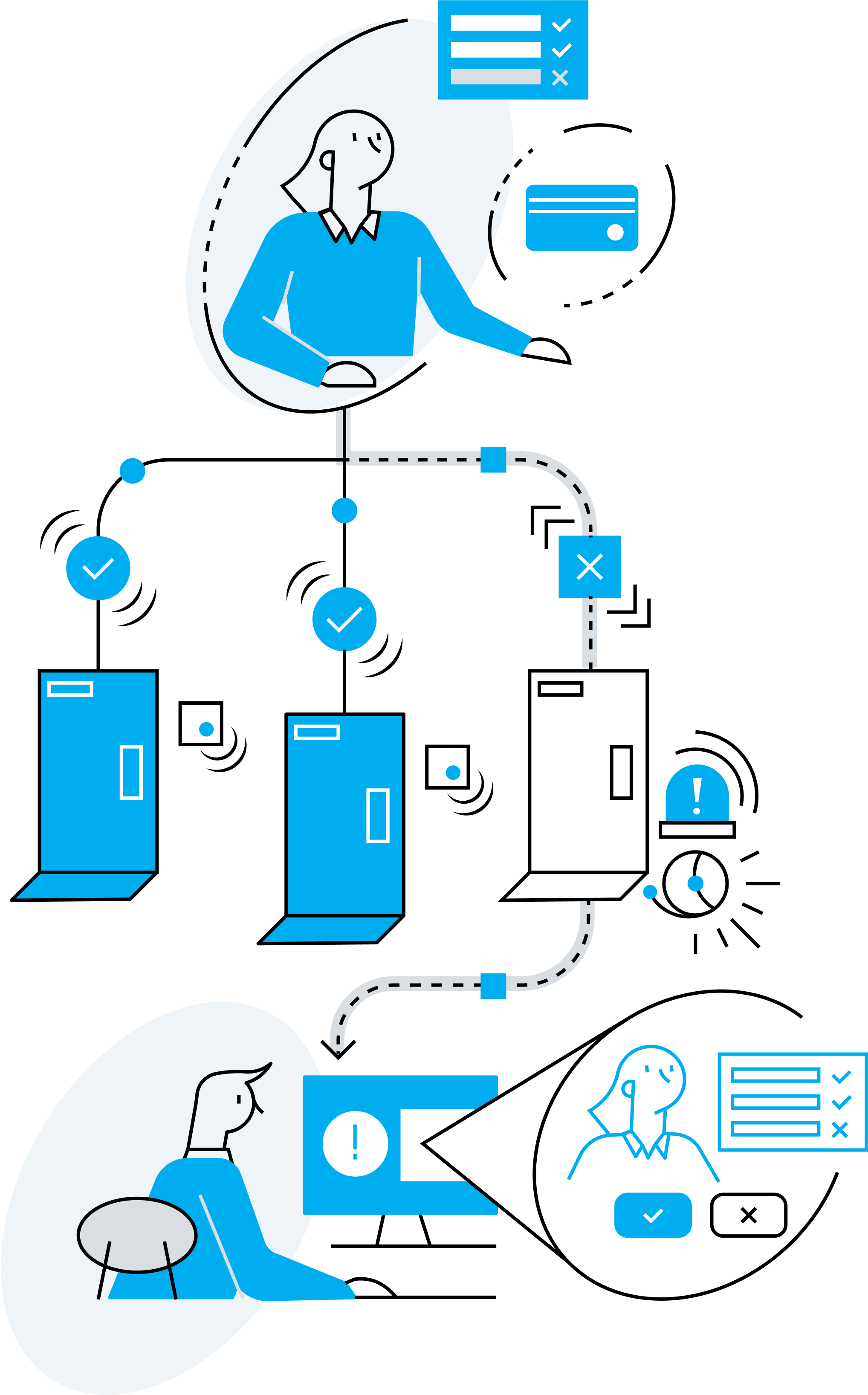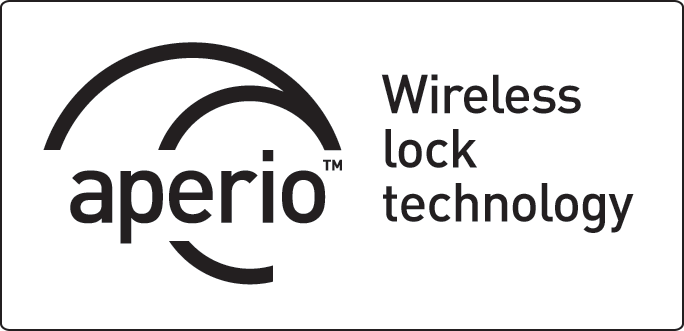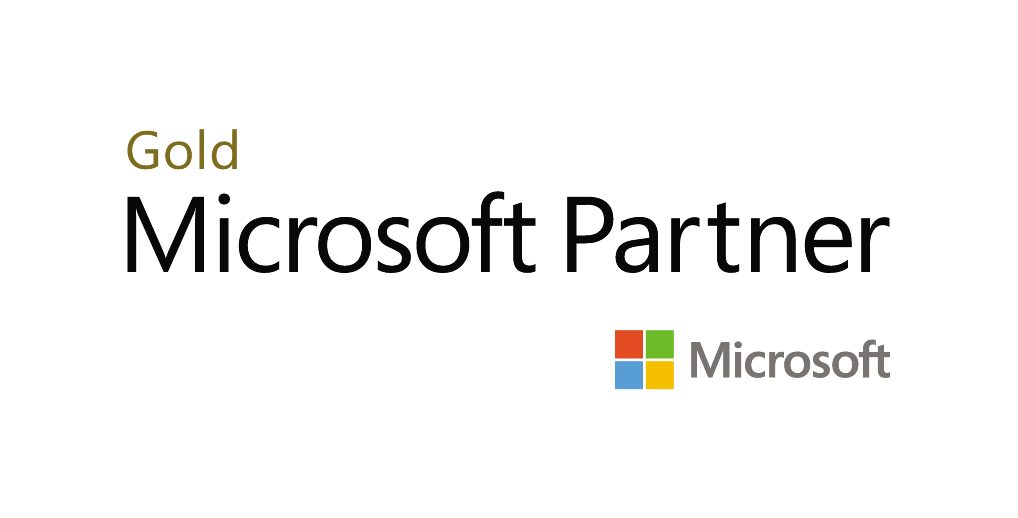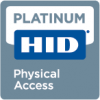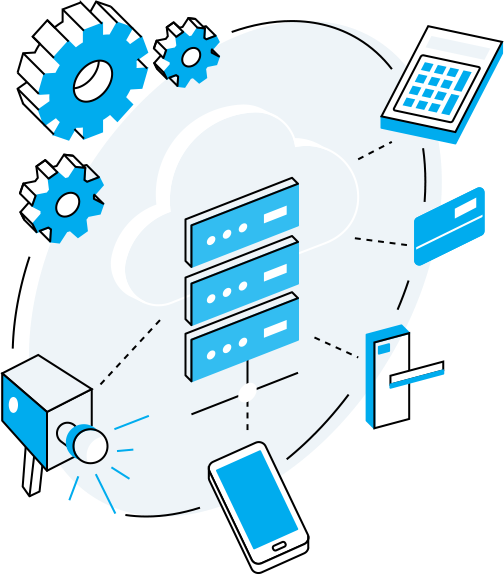Visitor Management
Visitor management adds important benefits to access control:
- All visits and visitors are logged and kept for the record.
- Visits can be organized, prepared and visitors vetted in advance.
- Visits can be easier to organize, conduct and supervise in accordance to rules and regulations.
Door Cloud covers two most common Visitor Management scenarios:
Ad-Hoc – Guests arrive unannounced and check-in at the reception desk. The visit is arranged and all necessary data is collected on the spot.
By invitation – Guests are invited via email, the visit is arranged and confirmed in advance, remotely. Reception desk stop is optional.
If access control is required for guests, they are issued with Key Links, so that the mobile phone can be used to open doors instantly, without the need to login or load apps.
